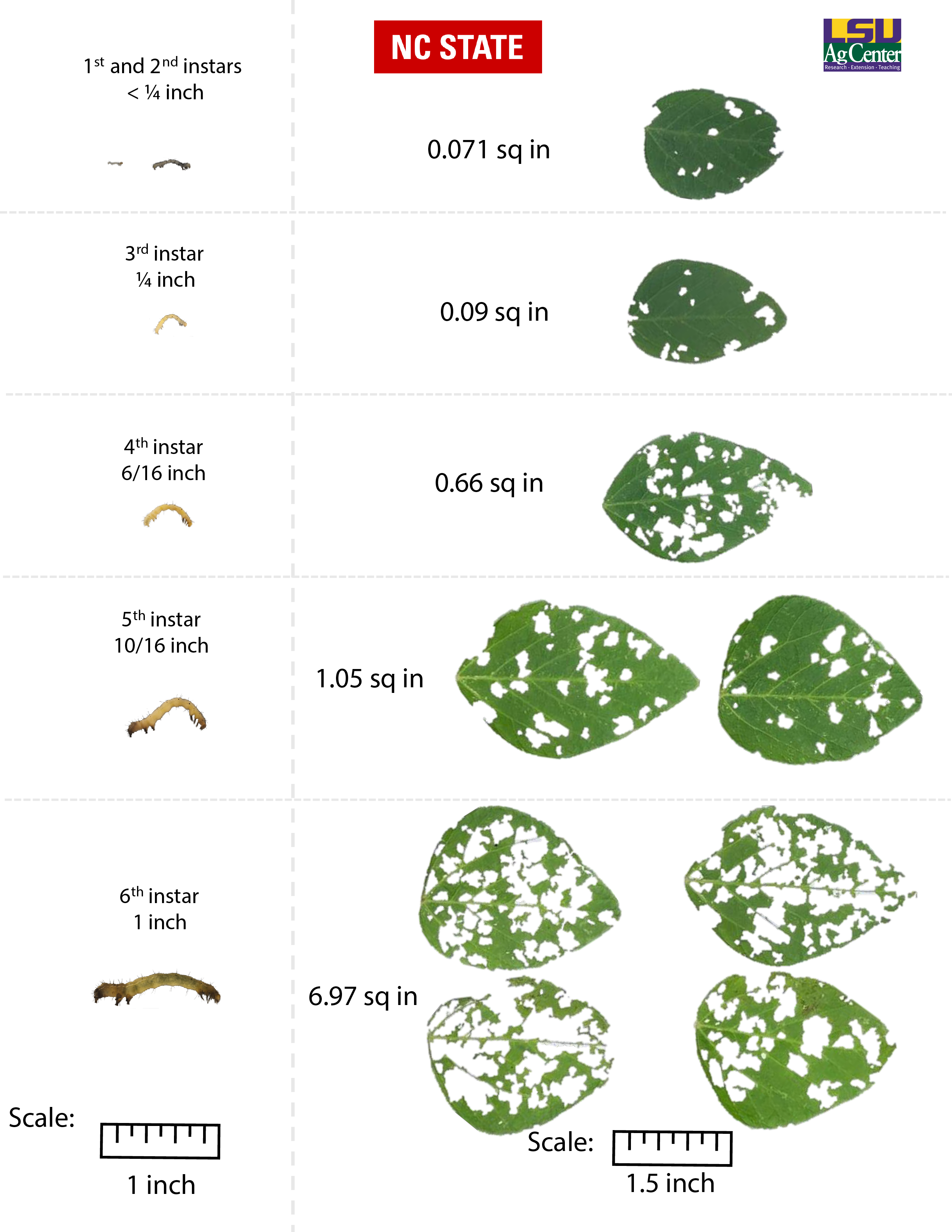Soybean Looper Defoliation Guide
go.ncsu.edu/readext?1078709
en Español / em Português
El inglés es el idioma de control de esta página. En la medida en que haya algún conflicto entre la traducción al inglés y la traducción, el inglés prevalece.
Al hacer clic en el enlace de traducción se activa un servicio de traducción gratuito para convertir la página al español. Al igual que con cualquier traducción por Internet, la conversión no es sensible al contexto y puede que no traduzca el texto en su significado original. NC State Extension no garantiza la exactitud del texto traducido. Por favor, tenga en cuenta que algunas aplicaciones y/o servicios pueden no funcionar como se espera cuando se traducen.
Português
Inglês é o idioma de controle desta página. Na medida que haja algum conflito entre o texto original em Inglês e a tradução, o Inglês prevalece.
Ao clicar no link de tradução, um serviço gratuito de tradução será ativado para converter a página para o Português. Como em qualquer tradução pela internet, a conversão não é sensivel ao contexto e pode não ocorrer a tradução para o significado orginal. O serviço de Extensão da Carolina do Norte (NC State Extension) não garante a exatidão do texto traduzido. Por favor, observe que algumas funções ou serviços podem não funcionar como esperado após a tradução.
English
English is the controlling language of this page. To the extent there is any conflict between the English text and the translation, English controls.
Clicking on the translation link activates a free translation service to convert the page to Spanish. As with any Internet translation, the conversion is not context-sensitive and may not translate the text to its original meaning. NC State Extension does not guarantee the accuracy of the translated text. Please note that some applications and/or services may not function as expected when translated.
Collapse ▲Authors: Igor Sulzbacher Schardong (NC State University), Dominic D. Reisig (NC State University), Berenice Romero (Louisiana State University), Jeff Davis, (Louisiana State University)
Soybean loopers can be tricky pests. One of those reasons is our that our defoliation thresholds (the level of leaf loss when we say it’s time to spray) let the caterpillars grow. Loopers do most of their feeding damage in the last few days before they turn into moths. That’s when they’re biggest and when they are harder to kill with insecticides.
If you wait until loopers hit the threshold, you may also be letting them grow larger and more damaging. That’s why it’s important to 1) keep defoliation under the threshold, 2) watch how many loopers are in the field, 3) check their size, and 4) estimate how much more they might eat.
We put together a guide using both published research and our own data. It shows how big soybean loopers are at each stage (called “instars”, with a 1-inch scale to compare). It also shows how much leaf tissue they eat as they grow (with a 1.5-inch leaf scale).
We found that the smallest loopers (1st and 2nd instars) eat very little, less than 1/10 of an inch of a leaf. However, one large 6th instar looper can eat almost 7 inches of leaf tissue.
When you scout, don’t just look at how much damage has already happened. Also look at how many loopers you see and how big they are. A few big loopers can do a lot of damage fast. That can help you make better decisions and avoid surprises.



